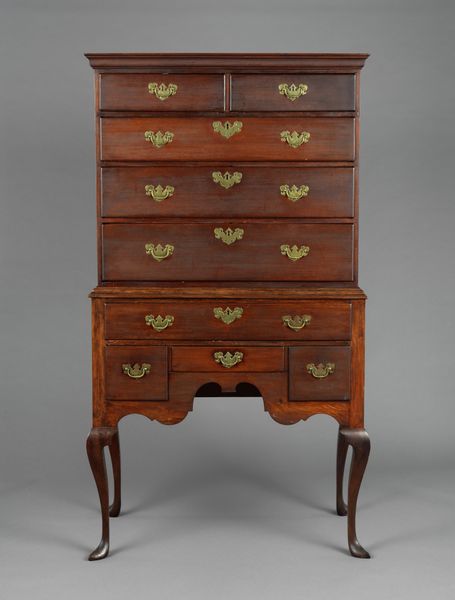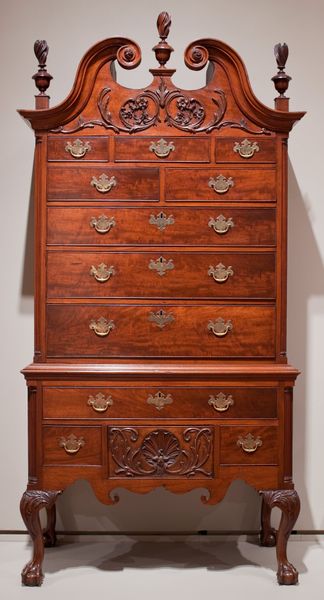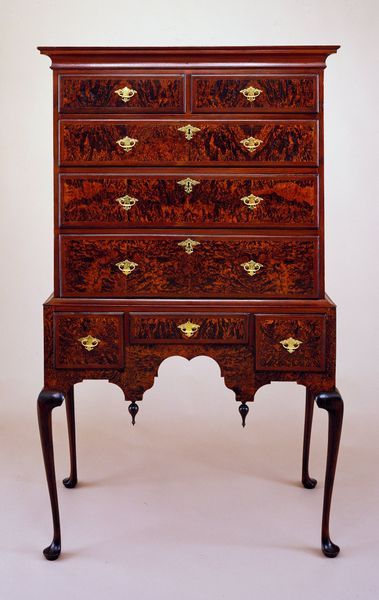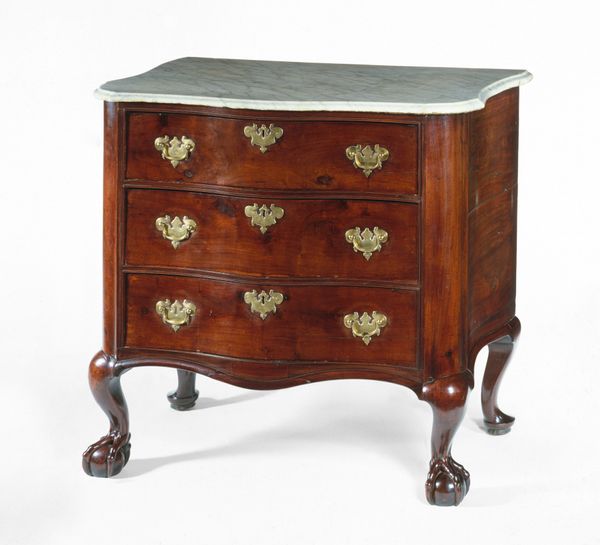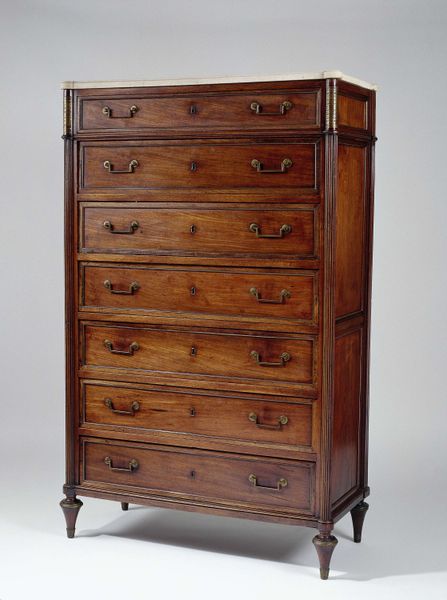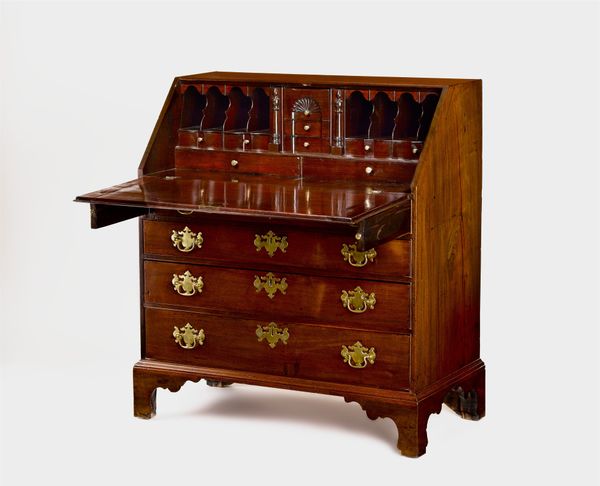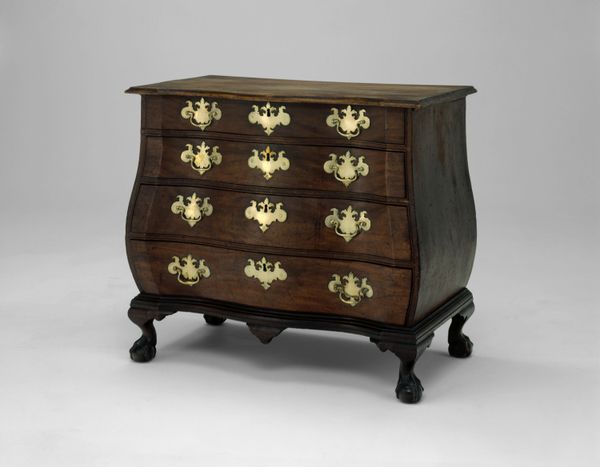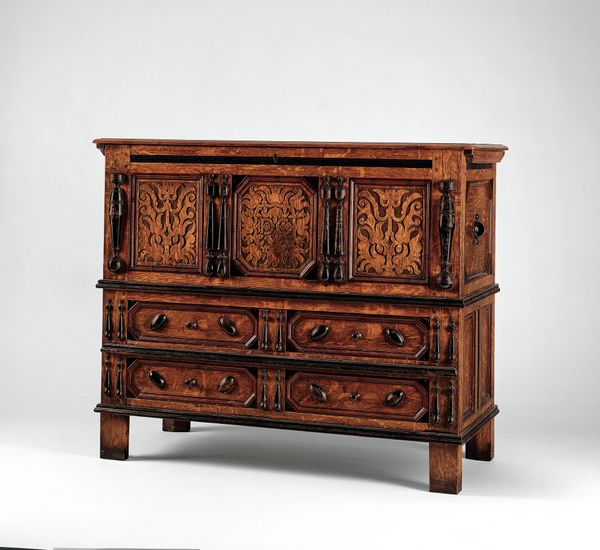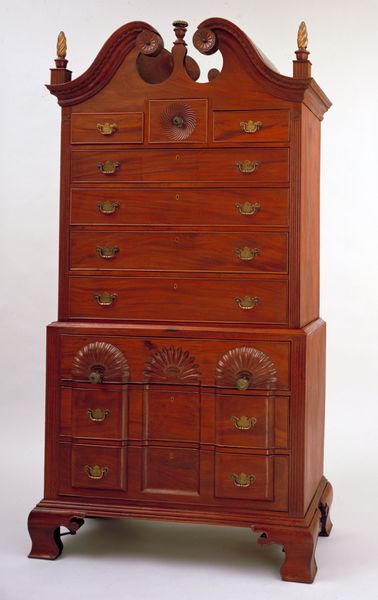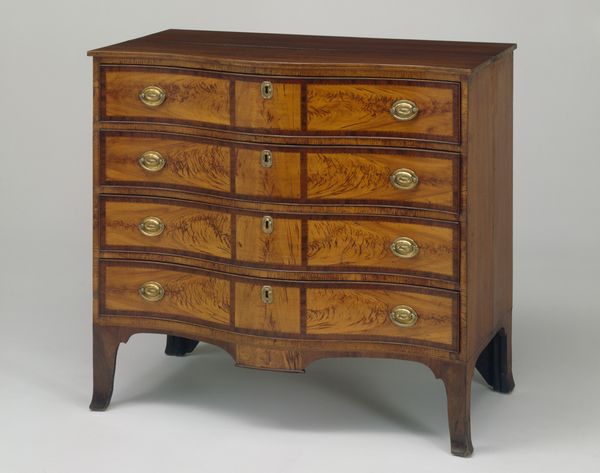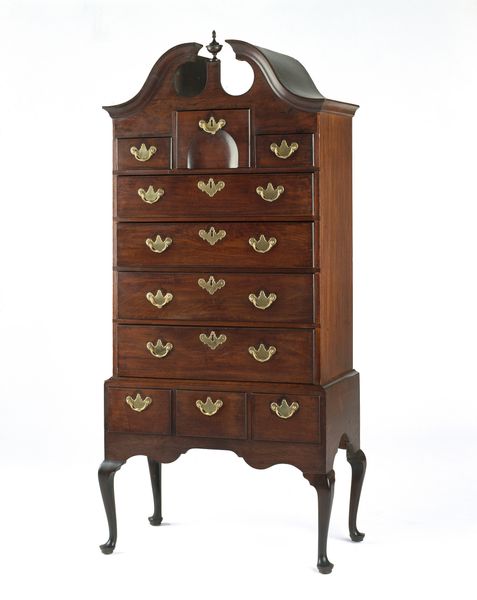
carving, wood
#
wood texture
#
medieval
#
carving
#
pottery
#
wood
#
decorative-art
Dimensions: 86 3/4 x 44 x 21 3/8 in. (220.3 x 111.8 x 54.3 cm)
Copyright: Public Domain
Editor: Here we have Thomas Townsend’s "Chest-on-Chest," created between 1769 and 1775. It’s made of wood, with detailed carving. The immediate impression is its sheer height and formality, but also the evident skill involved. What strikes you when you look at it? Curator: Well, the chest speaks to the era’s social stratification and colonial dynamics. These pieces weren’t just furniture; they were statements of wealth and status, especially significant in the context of a burgeoning merchant class during the pre-Revolutionary period. Who do you think owned this, and how would their identity influence how we consider this piece? Editor: I imagine it belonged to someone quite wealthy, a family that wanted to show off their affluence through intricate decoration. Does that connection to wealth impact how we should view its artistry? Curator: Absolutely. Consider that the wood itself, likely imported mahogany, represented global trade networks deeply entangled with colonialism and enslaved labor. So, this chest embodies luxury *and* exploitation. Its beauty masks the extraction and suffering involved in its creation. Does seeing it this way change your perception of its “beauty”? Editor: It complicates it. It’s hard to ignore the human cost behind the exquisite craftsmanship. I hadn't initially considered its implications beyond surface appearance. Curator: Exactly. It forces us to confront uncomfortable truths about our past, urging critical engagement rather than passive appreciation. We are dealing not just with furniture, but an index of an exploitative system of forced labor, reflecting social norms. Editor: I appreciate that shift in perspective. I'm more aware now of its multilayered meaning beyond just craftsmanship and materials. Curator: And understanding those layers allows us to truly grapple with its legacy. Hopefully that inspires curiosity in how it intersects with present inequalities too.
Comments
No comments
Be the first to comment and join the conversation on the ultimate creative platform.

